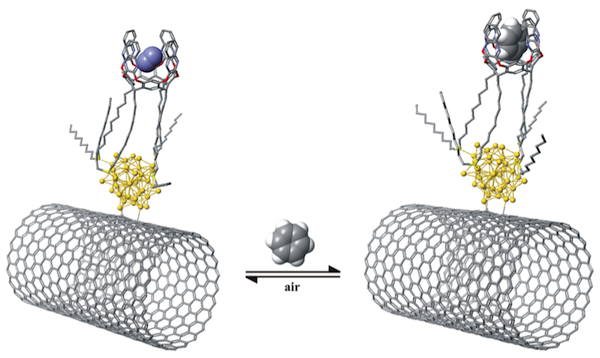A taste of our 2015 harvest

ioChem-BD, a solution for the Big Data problem in computational chemistry
The problem of managing huge amounts of data appears in many scientific research fields. The volume of information that is generated daily, coming from the results of scientific calculations is increasing exponentially and researchers need to have tools to manage it.
In the search for solutions to this problem, researchers at ICIQ and at URV have developed the ioChem-BD platform, a multi-headed tool aimed at managing large volumes of computational chemistry results from a diverse group of already common simulation packages. The platform automates the extraction of relevant data and its conversion into fully tagged information in a distributed database. It provides tools for the researcher to validate, enrich, publish and share information, and tools in the cloud to access it and view it.
Managing the Computational Chemistry Big Data Problem: The ioChem-BD Platform
M. Álvarez-Moreno, C. de Graaf, N. López, F. Maseras, J. M. Poblet, C. Bo
J. Chem. Inf. Model., 2015, 55, 95-103

A hand-held sensor selective for benzene
The collaboration between the groups of Prof. Pau Ballester at ICIQ and Prof. Eduard Llobet at URV has allowed the development of a highly selective sensor for benzene in air with a lower limit of detection to the extent permitted by law.
The researchers have prepared a new sensor based on multi wall carbon nanotubes (MWCNTs) oxygen plasma treated and decorated with gold nanoparticles whose surface was functionalized by quinoxaline-walled deep cavitands. They have found that the presence of benzene induces an increase in the resistance that allows the detection of this aromatic compound. The sensor has showed high response to benzene even in the presence of other similar aromatics with a theoretical limit of detection (LOD) of 600 ppt.
The sensing process is reversible at room temperature with the recovery of the resistance baseline upon air flushing, which is important for low power consumption. This makes it suitable for being integrated in hand-held portable analysers, wearable detectors and semi-passive radio frequency identification tags with sensing capabilities or in the nodes of wireless sensor networks with a wide range of potential applications in environmental monitoring, workplace safety or medical devices, among others.
Deep Cavitand Self-Assembled on Au NPs-MWCNT as Highly Selective Benzene Sensing Interface
P. Clément, S. Korom, C. Struzzi, E. J. Parra, C. Bittencourt, P. Ballester, E. Llobet
Adv. Funct. Mater., 2015, 25, 4011-4020.

Patent issued for Urakawa’s work on CO2 conversion to methanol
A patent for the high-pressure process for the hydrogenation of CO2 to methanol developed by Dr. Urakawa Research Group at ICIQ has been issued by the United States Patent and Trademark Office.
The work describes a continuous flow process for close-to-quantitative one-pass hydrogenation of CO2 to methanol where conventional and commercial methanol synthesis catalysts are used.
The process developed allows a highly productive conversion of CO2 to methanol achieving close to full one pass conversion. The process has also the advantage that further reactions, such as DME production, can be successfully carried out in the same reactor. Bearing in mind that methanol production worldwide is expected to pass from 40 billion tons per year in 2009 to 80 billion tons/year in 2016, this process is a great step towards methanol production from non-fossil resources.